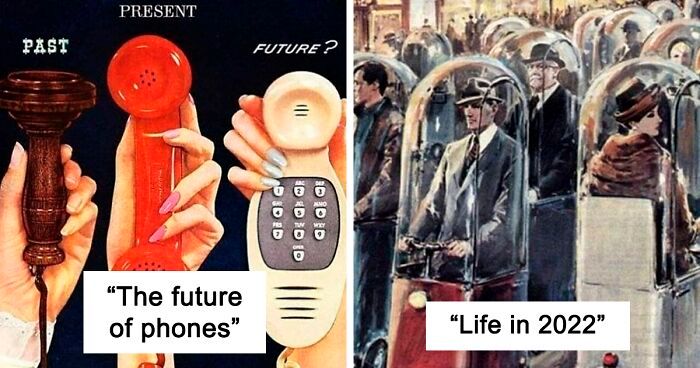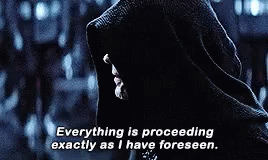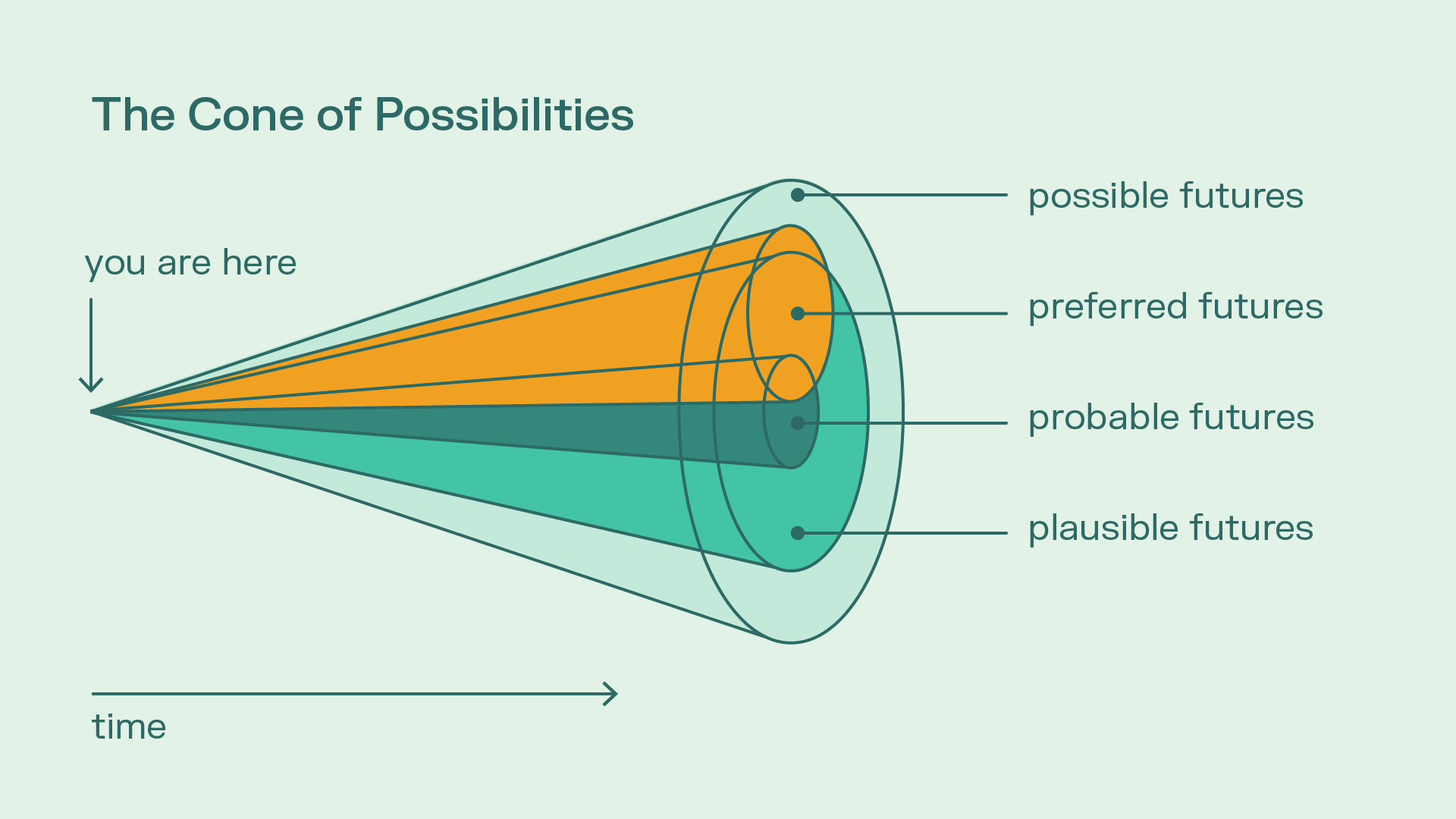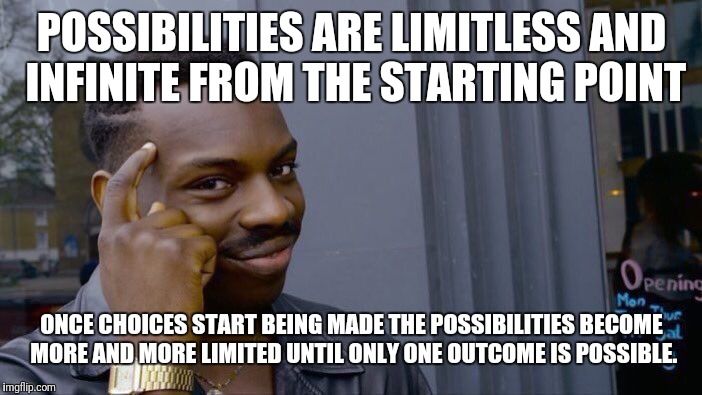Why do SDA Practitioners Need to Understand Strategic Foresight?
When Space Domain Awareness practitioners are focused on understanding present or recent past activities in space they're missing half of the problem. How can Strategic Foresight help made SDA... predictive?

When Space Domain Awareness (SDA) practitioners are focused on understanding present or recent past activities in space they're missing half of the problem.
The purpose of SDA is to enable timely and high quality tactical, operational, and strategic decision-making. It's easy to focus on current or past observables - that's what sensors and databases have access to! Our myopia on characterizing space objects and understanding their past history can blind us to how SDA can be used in future decisions.

SDA practitioners must understand how their efforts produce knowledge and wisdom that can affect future outcomes and are robust to many possible futures.
Strategic Foresight?
When we talk about strategic foresight, are we talking about predicting the future?
Absolutely not.
Predicting a single deterministic future is a fools game. However, there are some mental models and frameworks we can use to predict possible or plausible futures. How does this affect SDA and decision-making?
Quite simply, we can make SDA and decisions more robust by generating knowledge, wisdom, and decisions that are robust to a variety possible or probably futures.
The Futures Cone
In short, the Futures Cone is an abstraction that helps us think about plausible, possible, and probable states of the world at some point in the future.

Joseph Voros has written extensively about the history and usage of a Strategic Foresight tool called the Futures Cone. It's most common use is to develop strategic plans of action that are robust against sets of possible or probable futures. Decision-making objectives can vary the time horizon from very short (minutes?) to very long (years).
What do the terms plausible, possible, and probable mean? I'm borrowing the following definitions from Voros' article:
"Plausible - those we think ‘could’ happen based on our current understanding of how the world works (physical laws, social processes, etc).
Possible – these are those futures that we think ‘might’ happen, based on some future knowledge we do not yet possess, but which we might possess someday.
Probable – those we think are ‘likely to’ happen, usually based on (in many cases, quantitative) current trends." (Joseph Voros, The Futures Cone Use and History)
It cannot be stressed enough that the Futures Cone framework does not allow us to predict a specific future.
Nevertheless, its utility is substantial, meaningful, and largely ignored for the purposes of building and maintaining actionable SDA.
How to Use the Futures Cone in SDA
Ok, so maybe it is possible to use the Futures Cone framework from Strategic Foresight to help direct our SDA efforts.
What should we do, then?
The first lesson the Futures Cone teaches us is that there are whole (infinite!) sets of futures. Some are more probable than others, and others are only plausible (but perhaps have very low probability). The key to leveraging the Futures Cone in SDA is internalizing the idea that there are many possible futures and that you want to prepare for 'as many of the most probable futures' as you can.

What does this mean for how you should pursue SDA?
- Focus on curating SDA knowledge for probable scenarios. Spend time with your decision-making 'customers' to build some probable scenarios to inform your sensor tasking and characterization activities. How can you prepare by generating the knowledge necessary to make decisions in various probable scenarios?
- Make a conscious decision on SDA knowledge utility for short-, medium-, and long-term futures. If your organization is reactive in SDA decision-making, then your time-horizons for the types of SDA knowledge you generate is short. You're not worried about next month or next year. Rather, it is best to work with your decision-making customers to intentionally allocate SDA resources between short-, medium-, and long-term decisions that need to be made.
- Use the Futures Cone framework to ask better questions. Avoiding strategic, operational, or tactical surprise is more about asking better questions than getting better sensors. Try inverting the Futures Cone to identify new possible scenarios and back out what kinds of SDA knowledge are necessary to provide decision-makers with what they need.
There is certainly a lot more SDA practitioners could use Futures Cones for, and I've only skimmed the surface on the toolbox that the Strategic Foresight discipline can bring to bear on SDA.
Stay curious!
Subscribe to the Newsletter
If you enjoy this content, show your support by subscribing to the free weekly newsletter, which includes regularly published articles as well as additional comments from me. There are great reasons to do so and subscriptions give me motivation to continue writing these articles! Subscribe today!


